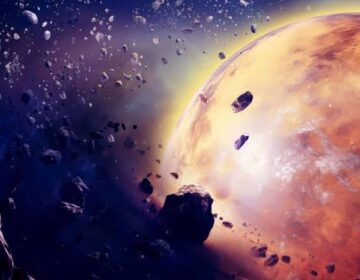As stars age into red giants, they can destroy nearby giant planets through powerful tidal forces.
The discovery offers a glimpse into the Sun’s eventual transformation and its possible impact on our Solar System.
When stars like the Sun exhaust their supply of hydrogen, they begin to cool and swell, transforming into enormous red giants. For our own Sun, this transformation is expected to occur in roughly five billion years.
In a new study scientists examined nearly 500,000 stars that had recently entered this “post-main sequence” stage of their lives.
Through this extensive analysis, the team identified 130 planets and planet candidates (i.e., that still need to be confirmed) orbiting close to these aging stars, including 33 that had never been seen before.
The researchers noticed that close-in planets were much less common around stars that had expanded and cooled enough to become red giants (i.e. that were further on in their post-main sequence evolution). This pattern suggests that many of these planets may have already been destroyed as their host stars evolved.
Lead author Dr. Edward Bryant (Mullard Space Science Laboratory at UCL and the University of Warwick) explained: “This is strong evidence that as stars evolve off their main sequence they can quickly cause planets to spiral into them and be destroyed. This has been the subject of debate and theory for some time but now we can see the impact of this directly and measure it at the level of a large population of stars.







